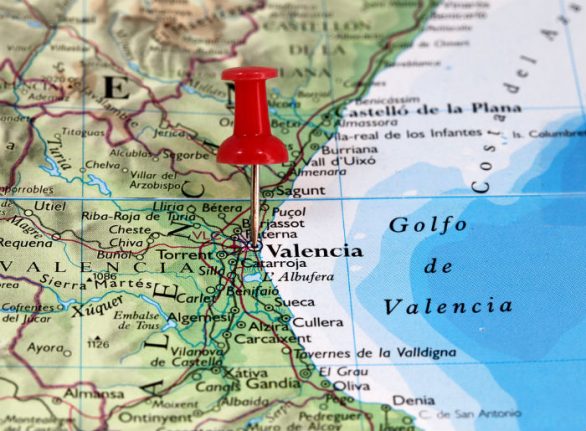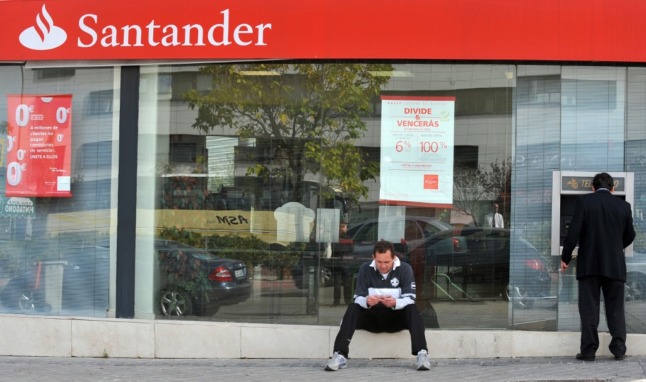Lots of places have reasons to live there, the good may outweigh the bad anywhere.
Asturias may be more visually spectacular, the Basque Country may have the best gastronomy, Barcelona may be more international in outlook, Madrid may be more of a 24 hour city and Albacete… well best not to say anything about Albacete, maybe it has more cheese.
But let’s look at the combination of factors which make Valencia the best place to live in Spain. It’s the heady mix that make it the best.
The Climate
The World Health Organisation loves the climate around Valencia. It describes the Northern Costa Blanca and Valencia as having the ideal climate, not too hot, not too dry (so it’s green), and with plenty of sunshine so you get your Vitamin D hit regularly.
When you ally this to the sea breeze that picks up in the afternoons to blow away the cobwebs and any excess pollution that tends to hang over cities such as Madrid then you have a healthy environment to live in.
And that sea breeze means that summer temperatures max out around the 32-35ºC mark as opposed to 40-45ºC like in Murcia, Sevilla, Madrid and other rather inhospitable places in the summer (Notwithstanding the odd really hot day, even here we can’t avoid climate change)
 Sunset Over the Albufera. Photo: Graham Hunt/ https://valencia-property.com
Sunset Over the Albufera. Photo: Graham Hunt/ https://valencia-property.com
The Look
A Medieval centre, a Modernist Millenium project in the City of Arts and Sciences, a wonderful riverbed park, a superb city beach, beautiful turn of the century architecture with amazing facades, magnificent modern sports facilities, excellent shopping centres, a light railway and metro, safe bike lanes, tree lined avenues, university campuses, public parks and spaces all under endless blue skies, Valencia gives good value for your photos, your eyes and your envious glances from your friends and family once they know you live here and you constantly remind them.

Photo: Graham Hunt/ https://valencia-property.com
The Culture
A cafe society to die for, gastronomy from around the World, a club scene and nightlife renowned throughout Spain, a fantastic musical heritage, a participatory athletic culture, international acts with all types of concerts and performance arts, outdoor cinema, kids’ activities, an outdoor lifestyle, a language of its own, fallas fiestas, fireworks, paella and rice dishes, the sobremesa (Sitting around for hours chatting after meals)… Valencia has a relaxed culture and plenty to choose from, all you need to do is decide what it is that you are going to do today.
 Nightlife on the Patacona beach Photo: Graham Hunt/ https://valencia-property.com
Nightlife on the Patacona beach Photo: Graham Hunt/ https://valencia-property.com
The Way of Life
If it weren’t for the fine public transport, the excellent communications via road, rail and air, the speedy internet connectivity, the reasonable cost of living, the availability of abundant cheap seasonal foods and the friendliness of the people you might not think that your quality of life would improve on moving to Valencia compared with other places (And if that reminded you of the question in “Life of Brian” of what have the Romans ever done for us? then you would be right)
But when you add into the mix the ease of life, the fact that people work to live rather than defining themselves by their jobs, the laid back atmosphere, the importance of personal connections, the importance of children and the fact they stay children for longer, the family structure and the fiestas to enjoy time away from your place of work then you can see that your lifestyle might benefit and be upgraded by joining us here in Valencia.
 The Outdoor Lifestyle in Valencia. It even includes playing Quidditch in the Turia park. Photo: Graham Hunt/ https://valencia-property.com
The Outdoor Lifestyle in Valencia. It even includes playing Quidditch in the Turia park. Photo: Graham Hunt/ https://valencia-property.com
The Cost of Living
Living in Valencia isn’t as cheap as it used to be, is anywhere as cheap as it used to be? However, it’s much much cheaper than many other places in Spain and much cheaper than most places around Europe.
Madrid and Barcelona property costs more than double Valencia property per square metre on average, and rental prices in those cities are obscene compared with Valencia.
Food, transport, communications, nights out, eating out, cultural activities, sporting events and concerts are all priced well or free to participate in. There are plenty of free events all year round and local councils make sure that their communities have plenty to occupy themselves all year round (The most important position on any council is the Regidor de Fiestas, the person responsible for making sure fireworks wake you up in the middle of the night and early morning)
You need not spend anything to have a great night out at many times during the year as the fiestas are mostly public and free. Walk around and soak up the atmosphere, take a picnic and enjoy yourself.
 Every fiesta involves fireworks at some point! Photo: Graham Hunt/ https://valencia-property.com
Every fiesta involves fireworks at some point! Photo: Graham Hunt/ https://valencia-property.com
The Surroundings
You are never far away from a lovely day out, whether you cycle there, take public transport, plan a car journey or walk, you have different experiences all within a stone’s throw of the city. The city is surrounded by The Huerta – The orchard style green belt allowing you to explore small villages and hamlets surrounded by rice, tiger nut, onion or artichoke fields or orange and almond groves.
A bit further out the commuter belt offers high quality living and village life in the river valleys to the west of the city, the mountains to the north west or by the rice paddies to the south. Public transport will take you there and back easily and efficiently to explore.
A car trip will take you to Medieval fort towns like Peñiscola or Morella, villages as art installations like Fanzara, rivers allowing you to swim all year round as in Montañejos, skiing in Teruel, wine tasting in Requena and Utiel, beaches on the Costa del Azahar or Costa Blanca north, bustling towns with Roman and Moorish Castles and fiestas such as Xativa, Alcoy and Sagunto, fantastic hiking and climbing in and around Chulilla.
And a bit further afield but still available on a day trip, our trains are so quick that a day out in Madrid is perfectly possible in just over an hour and a half and even Barcelona in three hours.
 The picturesque hilltop town of Chulilla. Photo: Graham Hunt/ https://valencia-property.com
The picturesque hilltop town of Chulilla. Photo: Graham Hunt/ https://valencia-property.com
There are so many reasons, potentially too many, Valencia used to be known as the Hidden Jewel of the Mediterranean. These days in our interconnected Instagrammed world not many places are hidden. However we like it here, in fact we love it and so do so many of our clients.
This is the argument for why Valencia is the best place to live in Spain and potentially in Europe. Downsides exist of course, not too many, and I am sure you can provide some, but the upsides easily outweigh them. If you have a chance to come here remember that you only have one shot at life, why not make your shot in Valencia?
Graham Hunt is a real estate agent and relocation expert based in Valencia. Originally from just outside Liverpool he came to Spain as a student and never left. Read more at his blog or follow him on Twitter.
And if you want him to show you around some properties in Valencia, drop him a line.
READ ALSO: These are the 17 absolute worst things about living in Spain
If you don't agree with Graham and believe that you your village/town/city is the best place in Spain, send us an email and tell us why! Or leave a comment in the section below.





 Please whitelist us to continue reading.
Please whitelist us to continue reading.
Member comments